
THINGS TO SEE

FISHERMAN’S BASTION
The Fisherman’s Bastion is located in Budapest in the 1st district, in the Buda Castle Quarter, and is a UNESCO World Heritage Site. The neo-Gothic style building was designed by Frigyes Schulek and was built between 1895 and 1902. The Fisherman’s Bastion with its nine towers offers an impressive view of the Danube and the city. The building serves as a reconstruction of the historic city walls and provides a view of one of the most wonderful panoramas of Budapest. From the terraces of the Fisherman’s Bastion, you can admire Pest, the Parliament, the Szabadság bridge, and the entire city, which is impressive even at night, when the building is lit up above the city.
PARLIAMENT BUILDING
The Budapest Parliament, or the Parliament as it is officially called, is located in District V, next to Kossuth Square. The neo-Gothic building was designed by Imre Steindl and built between 1885 and 1904. The Parliament is one of the largest buildings in Hungary and one of the best-known landmarks of Budapest. The decorations on the magazine facade and
statues depict important personalities of Hungarian history and culture. With its imposing appearance and location overlooking the Danube, the Parliament has become one of the city’s iconic buildings. The lights at night enhance its spectacle and create a special atmosphere reflected on the river. The Parliament is a unique symbol of both Hungary and the capital.


Szent István Basilica
The Szent István Basilica is one of Budapest’s significant religious and architectural monuments, located in the V. district, on Szabadság Square. The neo-Romanesque basilica was completed between 1905 and 1906. The building was designed by Ignác Jámbor, but after its design, Gyula Halász and Ignác Kauser further refined the ideas. The Szent István Basilica is the country’s largest church, with a stunning panorama of the city from its dome.
The relic of “Szent Jobb” in the sanctuary of the building and cute mosaics decorate the interior. The basilica also serves as a venue for cultural events and concerts, attracting visitors with its special atmosphere and impressive interior spaces. The Szent István Basilica is an integral part of Budapest’s cityscape and rich history.
HEROE’S SQUARE
Heroe’s Square is one of Budapest’s most prominent squares, which is located in the inner part of the city, in the Városliget area. Built on the occasion of the Millennium Exhibition held in 1896, the outstanding square contains notable buildings and statues that remind of important events and personalities of Hungarian history and culture. On the imposing square stands the Millennium Monument, which consists of tall colonnades, column fragments and statues, depicting the conquest and other historical moments. Heroes’ Square also houses the Hungarian National Museum, and the square is surrounded by statues commemorating famous Hungarian historical figures.

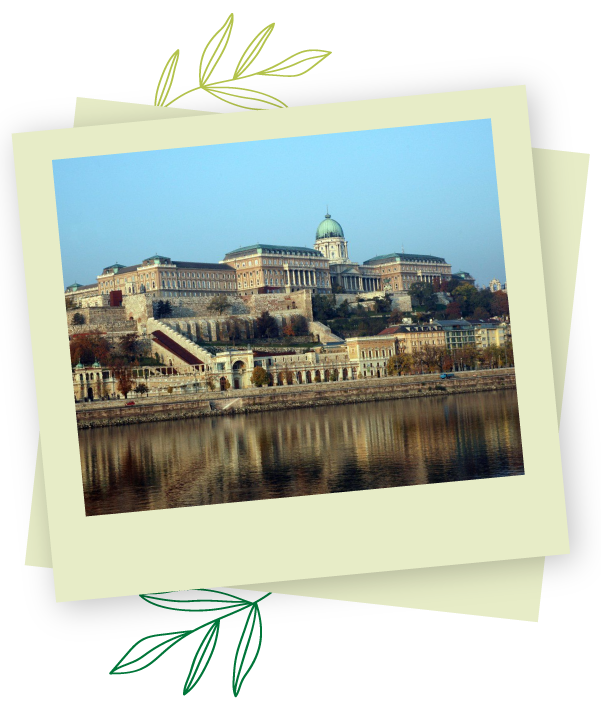
Danube Promenade
The Danube Promenade is one of Budapest’s most popular and lively public areas, which stretches along the banks of the Danube River. The promenade is accessible on both sides, on the Pest and Buda sides, and offers a stunning view of the river and the city’s characteristic buildings. The promenade along the Danube boasts many landmarks, such as the Chain Bridge, the Buda Castle and Gellért Hill. In the evening, the Danube bank comes alive, as the lights of the city and the illumination of the buildings create a magical atmosphere. The promenade is lined with cafes, restaurants and shops, where visitors can enjoy the stunning views and cozy surroundings. The Danube bank is an excellent location for walking and cycling.
GELLÉRT HILL
Gellért Hill offers a stunning view of the city and the Danube River. The Elizabeth Bridge, the Szabadság Bridge and many historical and modern buildings of the city are visible from here. The Statue of Liberty on Gellért Hill rises high and stands at the top of the hill protecting the city. Gellért Hill is also one of the city’s popular green areas, where you can walk in nature, away from the noise of the city. The Citadella is also located here on Gellért Hill, which also offers a great view of Budapest.
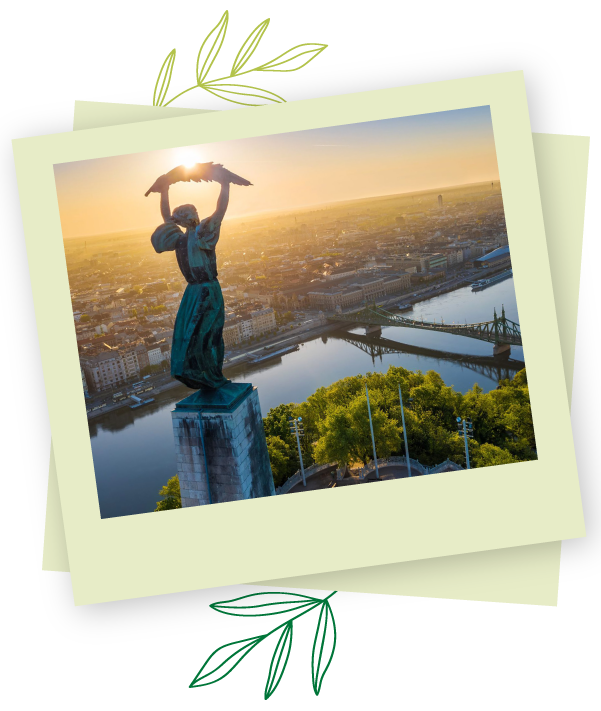
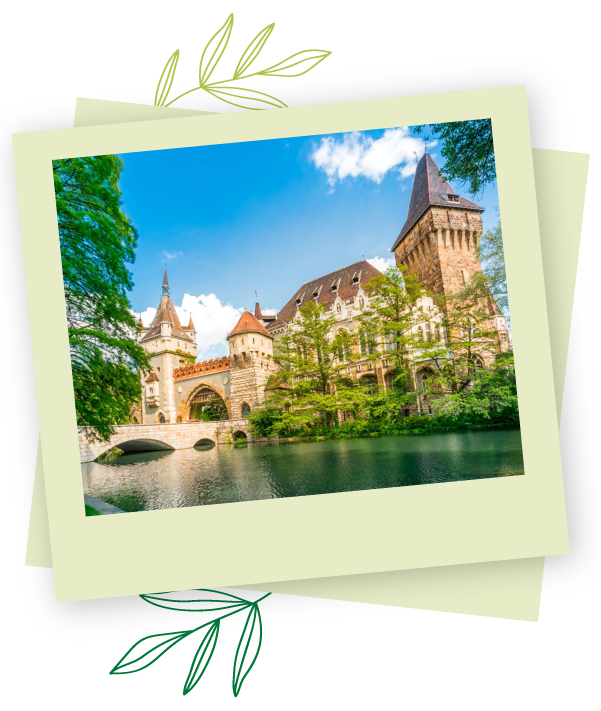
CITY PARK
It is a popular resting place and cultural center of the capital, with many attractions. One of the main attractions is Vajdahunyad Castle, a fabulous castle that combines various architectural styles and mimics significant buildings in Hungarian history. Another unmissable attraction in the park is the Széchenyi Baths, one of the largest spa complexes in Europe, where thermal pools, saunas and medicinal water options await visitors. In the Városliget there is the Városliget Lake and the Városliget Ice Rink, which provides an excellent location for ice skating in winter.
SZIGET FESTIVAL
The Sziget Festival is one of the largest music and cultural events in Europe, which is held every August in Budapest, on the Óbuda Island. In 2011, Sziget became the first of the twenty-five largest festivals in Europe. It takes place on Hajógyári Island in the middle of the Danube, which is easily accessible from the heart of the city. The event features a variety of musical styles, including pop, rock, electronic, alternative and world music performances. In addition to the music programs, workshops, special programs and diverse experiences are available.


NIGHTLIFE
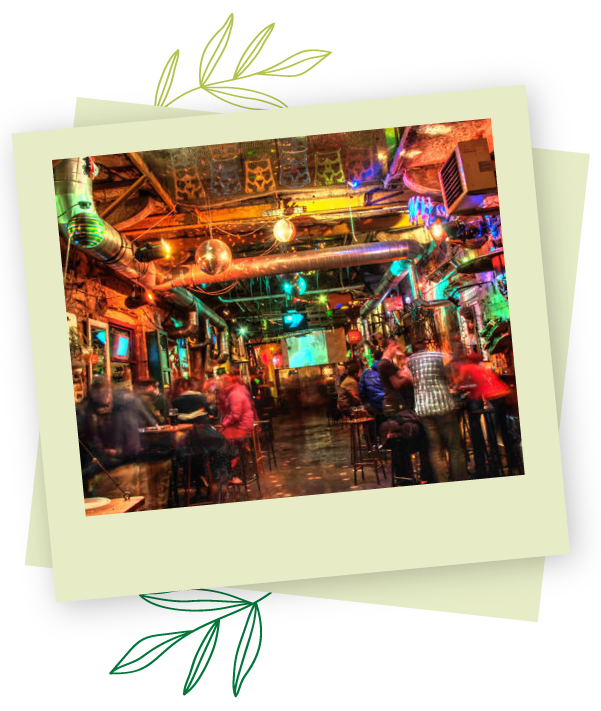
Szimpla Kert
Szimpla Kert is the most famous ruin bar in the city. It is not only a place to drink, but also one of the centers of the city’s cultural and social life. In the evenings, the place hosts various events such as concerts, theater performances, film screenings and fairs. In addition, the gastronomy is outstanding, as there are restaurants and buffets with different cuisines in the Szimpla Kert, where visitors can taste many delicious dishes. Szimpla Kert represents the more relaxed and free side of city life and has become a must-see for visitors to the city.
Fogas-ház + Instant-Fogas
Instant Budapest is another famous ruin bar that is a special part of the city’s entertainment and nightlife. Instant is located in an old apartment building and stands out for its unique interiors, creative decoration and colorful lighting. Instant is one of the biggest ruin bars in the city and offers many rooms for those who want to have fun. Free entry and several dance spaces available. The different rooms combine different themes and styles, creating a colorful and lively environment. The walls and ceilings are decorated with unique artworks, murals and installations that contribute to Instant’s bohemian and creative atmosphere.
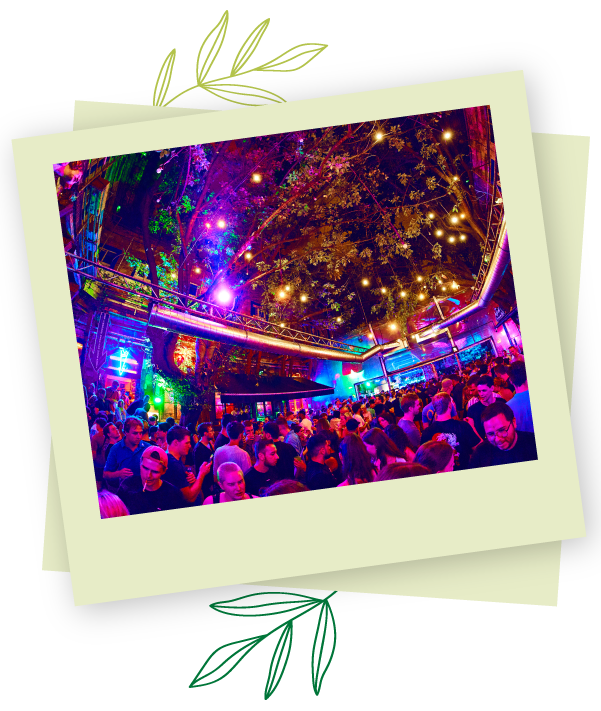

These famous ruin bars are an integral part of Budapest’s nightlife and ensure that visitors have a truly special experience. Ruin bars attract visitors with their unique atmosphere and creative design and have become the center of Budapest’s nightlife.

Budapest’s nightlife is sparkling and exciting, and many special clubs await those who want to have fun at night. We’ve already covered the city’s famous ruin bars, but here are a few more clubs worth exploring:
Morrison’s 2
Morrison’s 2 has a distinctive atmosphere characterized by modern design, comfortable seating and vibrant lighting. The venue is spread over two levels and offers visitors different styles of music. Located between the Nyugati railway station and the Margit bridge, the disco with a ruin pub atmosphere is easily accessible from anywhere in the city. You can find the best parties in Budapest night clubs at Morrison’s 2! Guests can enjoy 7 dance floors and karaoke, many styles of music, a wild party, a choice of unlimited drinks and a heated garden area in winter. The varied music palette and the youthful environment attract visitors of different tastes and ages.
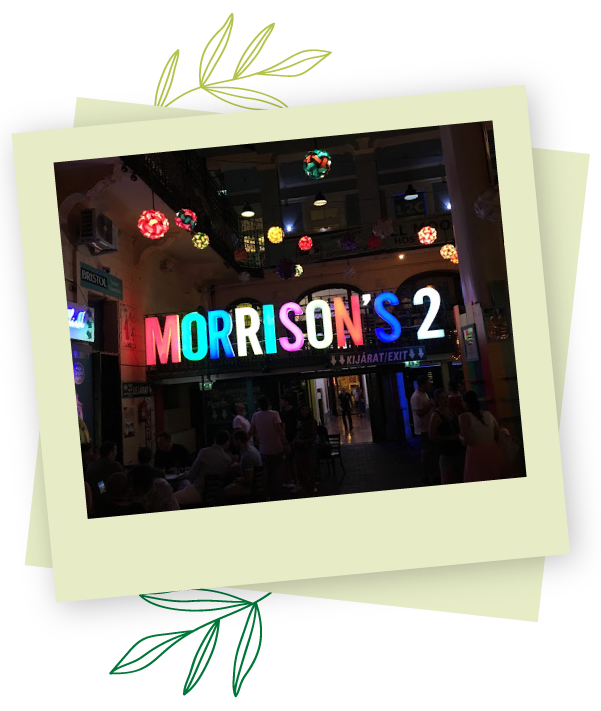

Akvárium klub
Akvárium Club is one of Budapest’s leading music and cultural venues, located in the heart of the city, near Deák Ferenc tér. The glass-roofed courtyard of the distinctive building of the Akvárium Club creates a special atmosphere, where night and cultural events take place throughout the year. Akvárium is one of the most dynamic and diverse venues in the city, where visitors can discover a wide range of musical styles. From live music concerts to DJ-led parties, Akvárium Club regularly organizes the latest music and art events. The club’s atmosphere is modern and exciting, and is particularly popular among young people and those interested in urban culture.

Baths
Budapest’s famous thermal baths are not only a significant part of the city’s cultural heritage, but they are popular resting places for locals and tourists alike. The thermal water fed by springs that weave through the entire city has attracted people for many centuries in the hope of healing and relaxation.

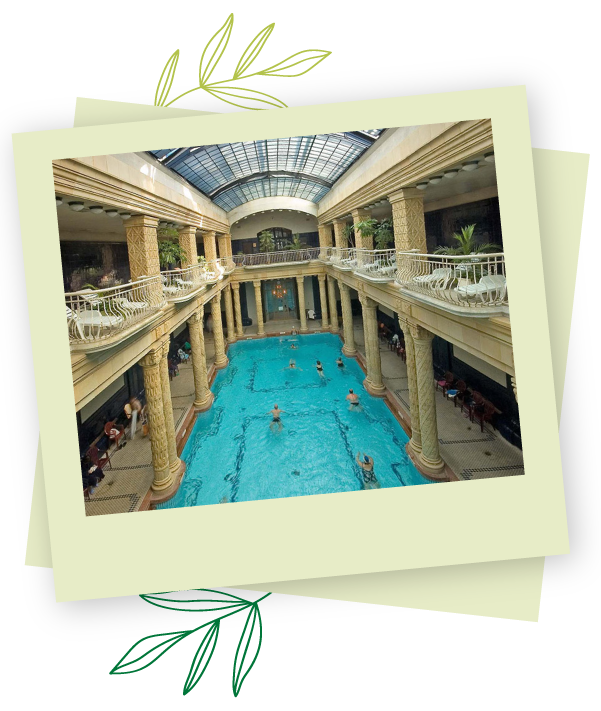
Gellért BATH
The Gellért spa is one of Budapest’s famous spas, and its building is an outstanding work of Hungarian Art Nouveau. Budapest XI. district, at 1 Szent Gellért tér, in the same building as the Danubius Hotel Gellért. The spa was built based on the plans of Artúr Sebestyén, Ármin Hegedűs and Izidor Sterk. Its imposing Art Nouveau building and its interior decorated with beautiful mosaics offer a fascinating sight. The spa offers various pools, whirlpools and saunas for guests to relax and recharge in the healing thermal water.
Széchenyi BATH
The Széchenyi Spa is one of Budapest’s most famous and most visited spas, located in the Városliget area. The building was built in the neo-baroque style in 1913, and today it still functions as one of the largest spa complexes in Europe. The Széchenyi Spa is famous for its medicinal water, which comes from thermal springs under the town and is rich in minerals. This type of bath water has a beneficial effect on health, so visitors to the bath can not only relax, but also heal. The spa complex has various pools, including outdoor and indoor thermal pools, swimming pools and cold water pools. Many saunas, steam cabins and wellness services are also available in the spa area, so visitors can enjoy complete relaxation.

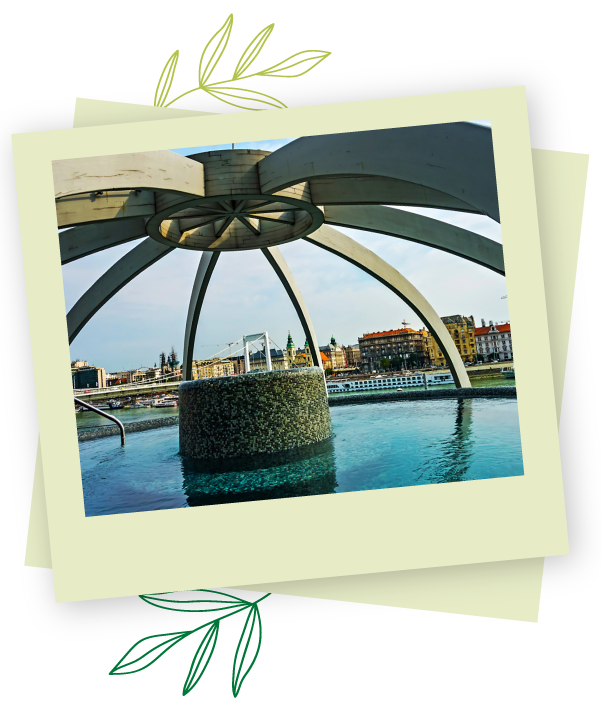
Rudas BATH
The Rudas Spa is located near the Danube bank, at the foot of Gellért Hill. The building was built during the Turkish subjugation, in the 16th century, and has been rebuilt several times since then, but it has preserved its original Turkish spa culture and atmosphere. The Rudas Spa is an excellent example of the traditional style of Turkish baths, combined with neoclassical and Turkish elements. Bath water also comes from thermal springs and can be enjoyed in pools available at different temperatures. One of the outstanding parts of the spa is the domed Turkish steam bath, which provides visitors with a unique experience. The spa offers various wellness services, including massages and saunas. The indoor pool at the top of the building offers a unique panorama of Budapest and the Danube.
Palatinus BATH
Palatinus Strand is one of Budapest’s most popular bathing spots, just a short walk from the Island Hostel on Margitsziget. It was the first public bath in Budapest that allowed outdoor bathing. In 1921, the large pool with a water surface of 5,000 square meters was completed, as well as two smaller pools. The large pool was considered the largest in Europe until the Second World War. Due to its rapid popularity, it became necessary to expand the bath, which is attributed to István Janáky and György Masirevich, in 1936. In addition to keeping the green areas and landscaping, the goal was to establish a bath building capable of accommodating ten thousand people.


1007 Budapest, Margitsziget, Sirály Csónakház, 23800/6 hrsz.

+ 36 30 /
587-7079

info@islandhostel.hu
info
@
islandhostel.hu
KO20002962KO20002962
